
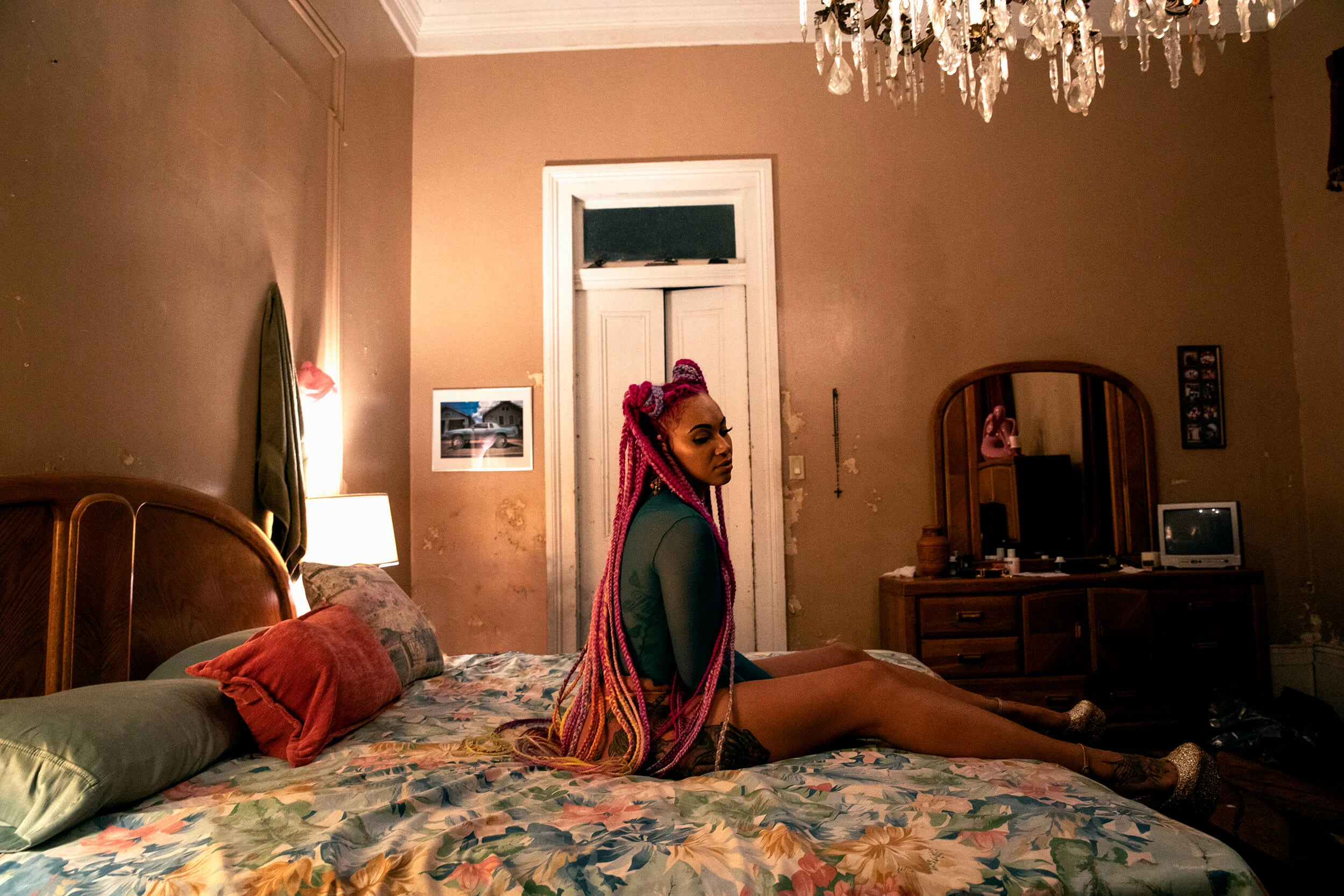
Best known for her work as a music video director for the likes of Rihanna, Solange and Beyoncé, this month Melina Matsoukas takes the next step in her career with the release of her debut feature film, Queen & Slim. Written by Lena Waithe, the film is a story of love, loss, race, and ultimately tragedy that focuses on the nuances of Black experience in America today. Here, we meet Melina in New York to dive further into the unusual creative process that brought the film to life.
Cover image by Lelanie Foster.
Disciplined, persistent, ambitious, Melina Matsoukas is a true Capricorn. It’s a few minutes into our sit down at Melina’s Brooklyn hotel, and she casually shares, between orders of eggs and breakfast sausage, that on-top of the release of her first feature film (with press-blitz and advance screenings in LA, DC, and NY), and accepting this year’s Wall Street Journal’s Innovator award, she’s taken on another task, one that other directors would happily leave to the film’s PR department. “I'm a little overwhelmed but I’ve taken over the planning of our premiere party ,” she explains. “I really want the narrative, number one, to be extremely powerful, and number two, be extremely authentic to us so I’ve got all my friends to help because they're all so talented in their own ways. It’s gonna be funnnnnnn!” she grins.
It’s a tried and tested method for Melina, who has enjoyed some of her most successful creative collaborations by way of working with her friends. The 38-year-old director made her name creating music videos for the likes of Rihanna and Solange as well as Formation for Beyoncé’s music-cum-visual short Lemonade. “It’s a feeling,” Melina describes. “I ask myself, does it move me?” when I ask Melina on how she sifts through the plethora of creative projects that come her way. “I knew I wanted a drama and with Queen & Slim, it came around and it felt like it was everything I always wanted. It was political AND it had something to say. It was funny as fuck, and it's Black as hell, which is really important for me. It speaks to our people, it speaks our community, to our unity, and then it's an intense love story.”
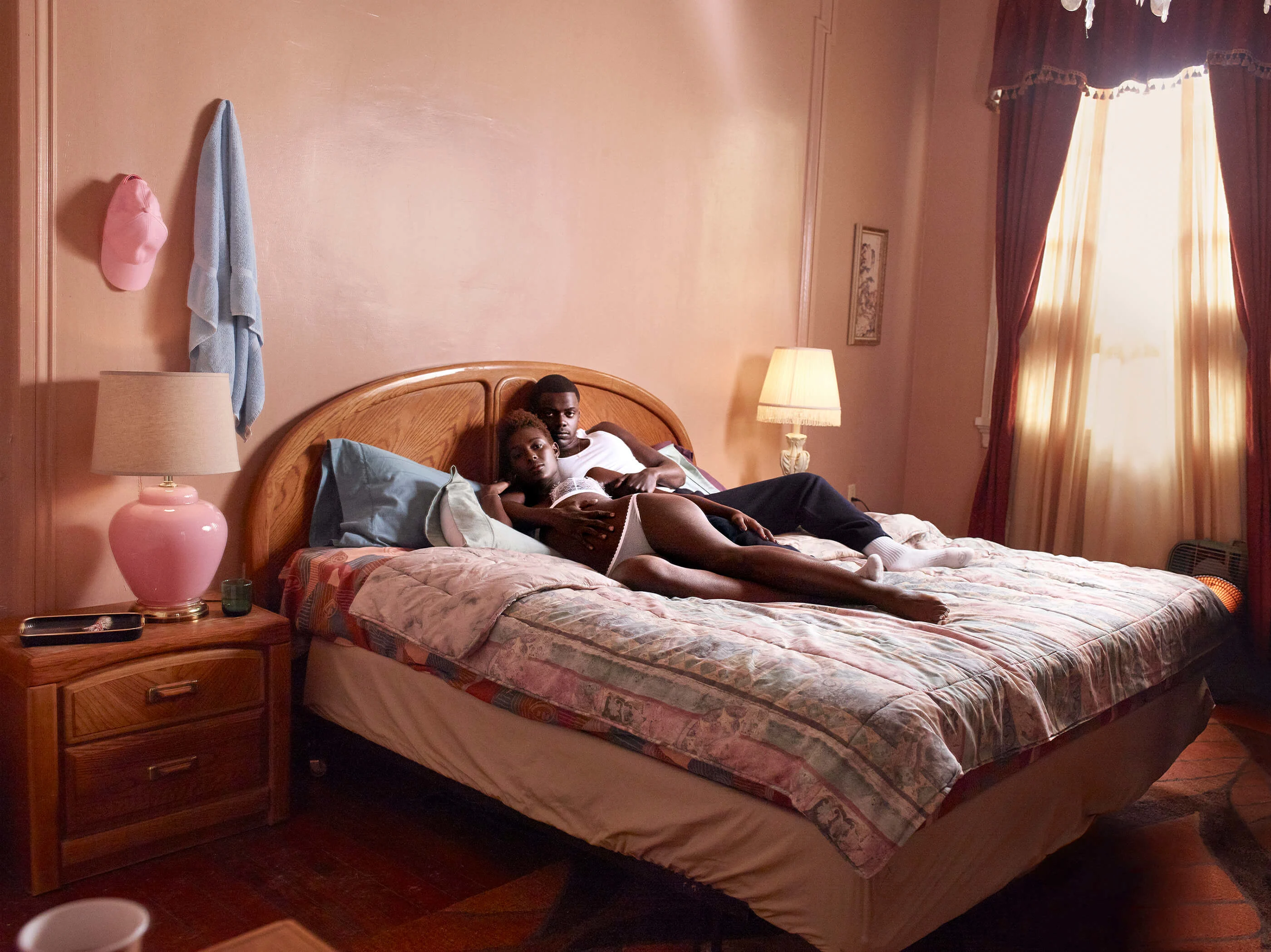
Her stunning long-form directorial debut came by way of Lena Waithe, the screenwriter, producer, and actress who, after penning the script knew Melina would be perfect to bring the tragic story of love, fear, race, and loss to life. “Even though we were friends, I had been looking for the right story. Lena was like, "I have this script and I want you to do it," and I was like, let's see if I love it. I like working with friends but I want to love the project. I don't want our relationships to dictate any of our work.”
Melina did love it. It’s hard not to. The film, follows Queen (played by newcomer Jodie Turner-Smith) and Slim (played by Daniel Kaluuya), as an ill-fated first date inexplicably leads the pair down a path that highlights the triumphs of the human spirit (love, understanding, camaraderie) as well as its darkest caverns (hatred, bigotry, and greed). It’s a story that looms over you long after you’ve left the theater, undoubtedly thinking why you’ve never seen a story like this on-screen before.
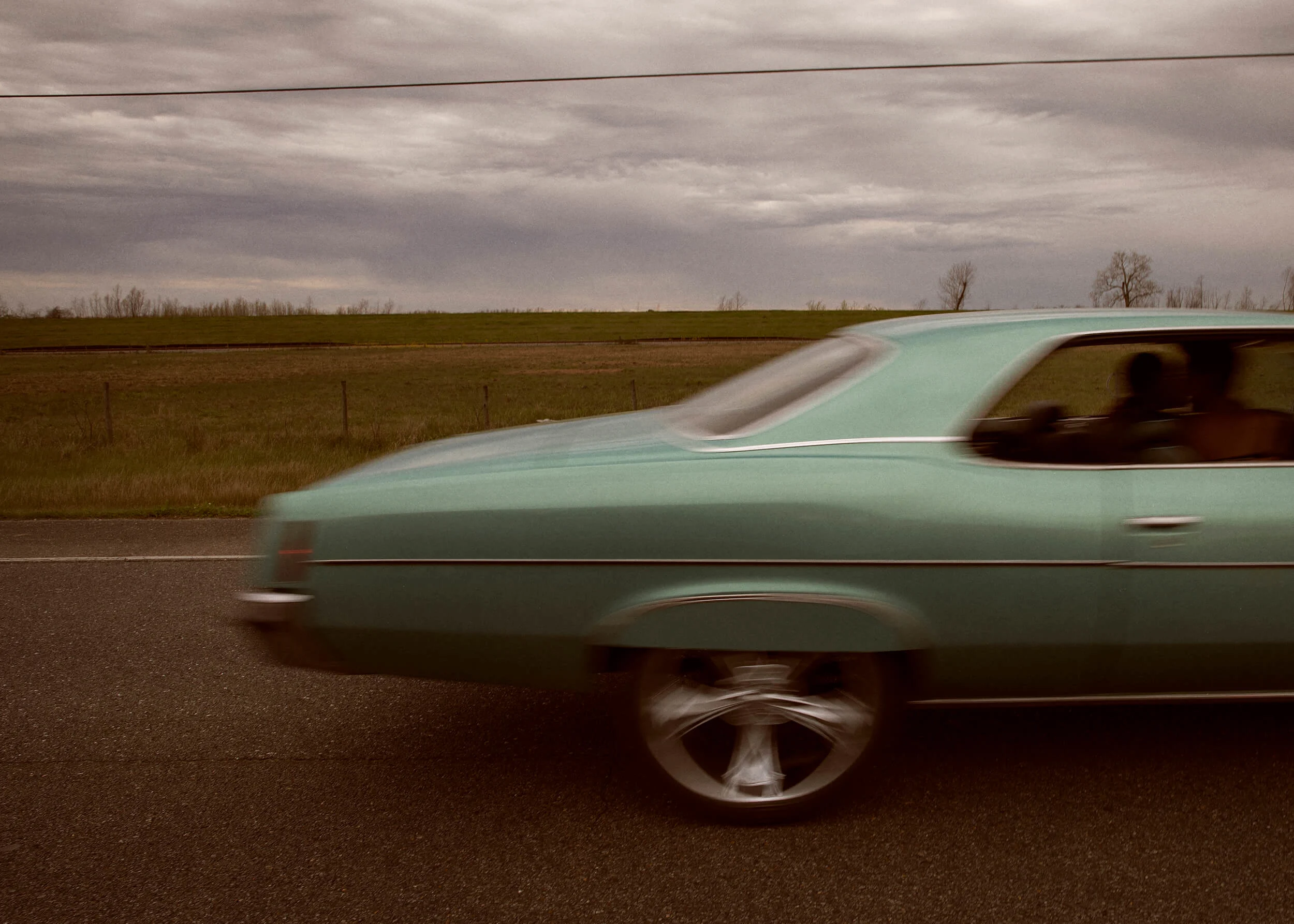
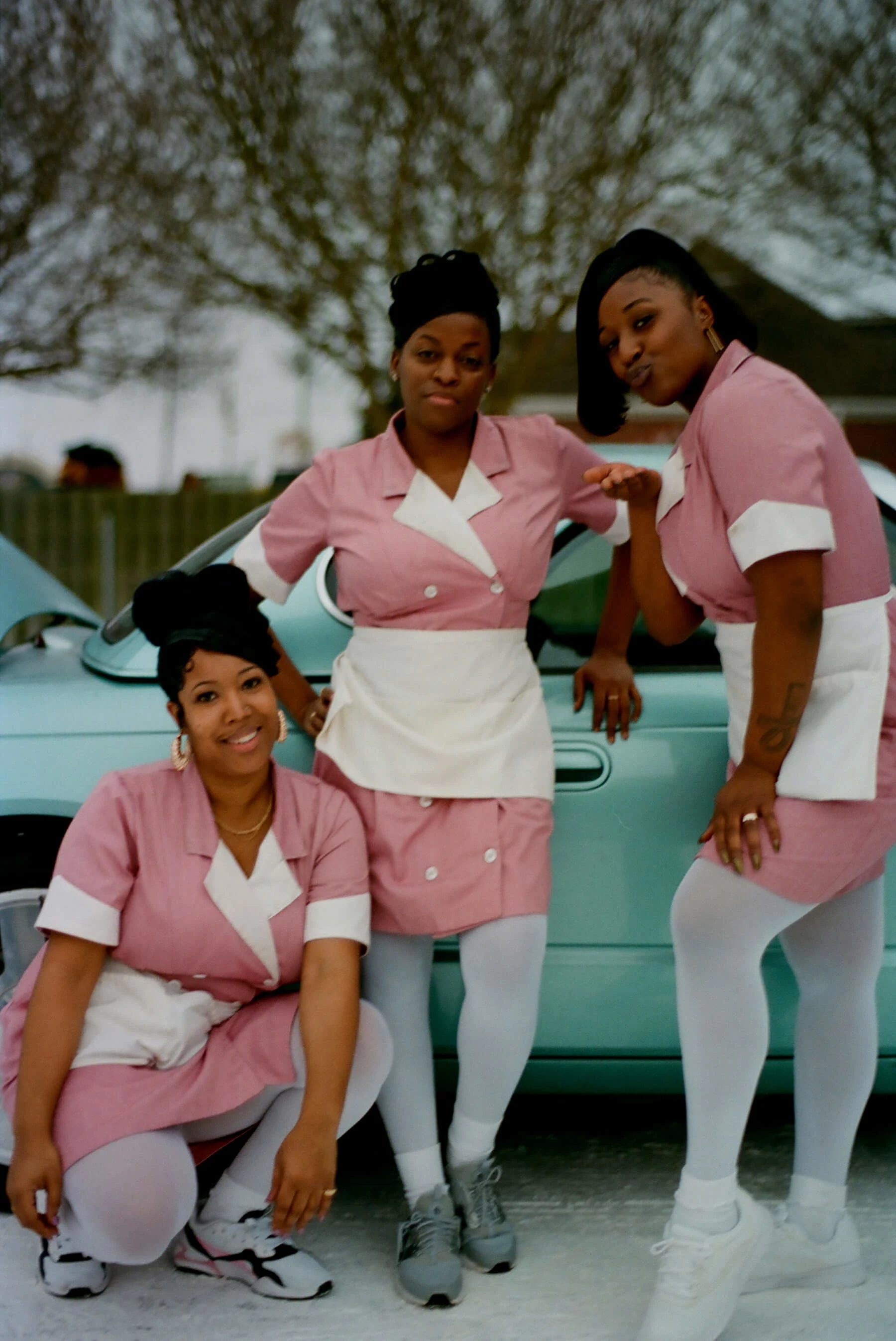
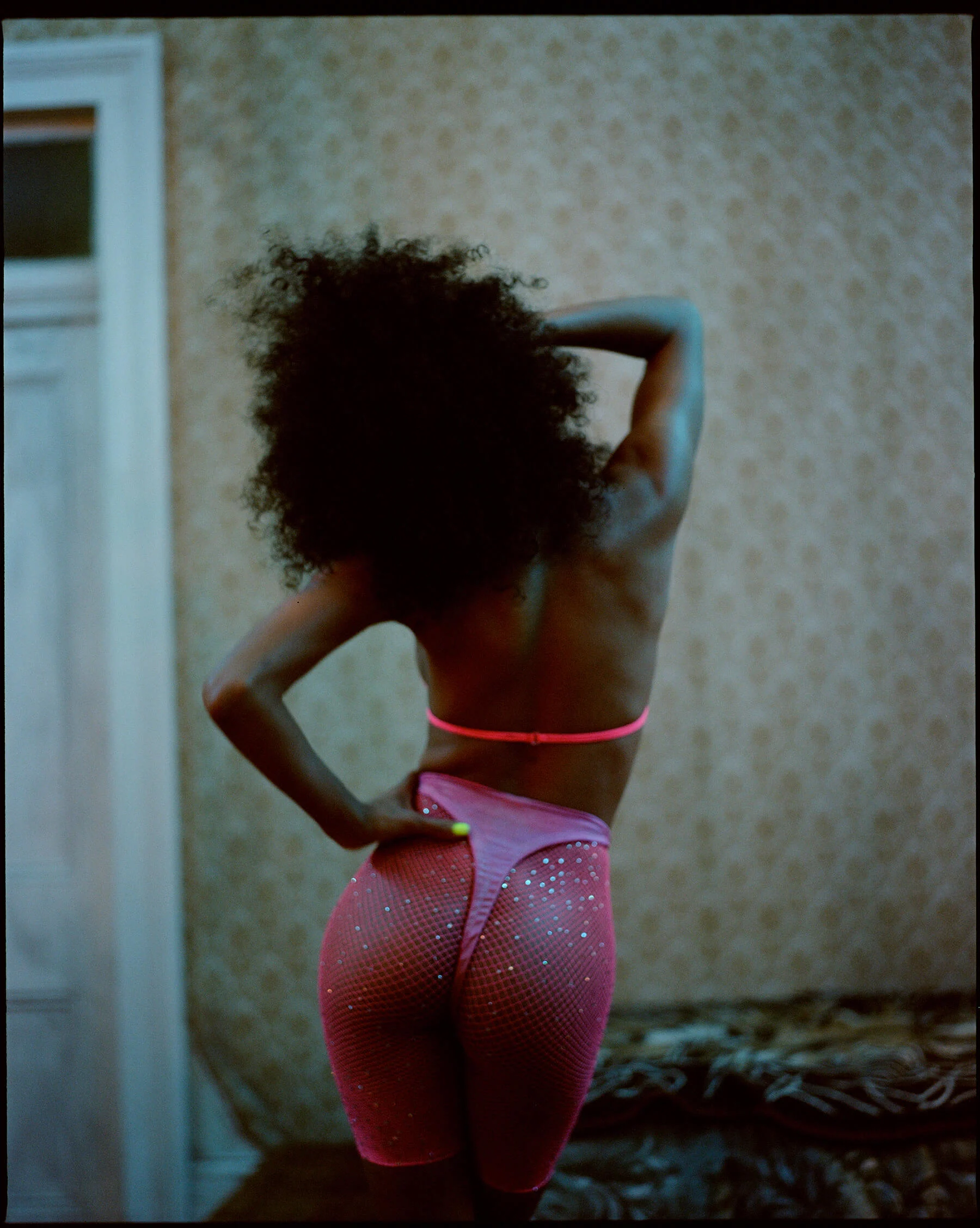
I wanted to do something that was deeply moving in a very different way.
Melina wanted to reimagine the visual storytelling of Black experience, even down to the role of the B-Unit photographers, usually hired to simply document a film’s creation at play. “They just capture your film. They capture BTS, or they shoot essentially your frame, optioning that for publication during the marketing of the film. But it’s never done with any style,” she says. “It's also really difficult because they have to be photographers in the union, and there is not a lot of people of color in the union as it’s expensive and you have to have wracked up a certain amount of hours. I feel like we're always ostracized from these spaces and it's offensive to me.” Melina saw this as an opportunity to “create art, to make something powerful, and to also work with amazing photographers that I wanted to always collaborate with. , I wanted to do something that was deeply moving in a very different way.”
To that end, Melina handpicked four photographers of color, Campbell Addy, Awol Erizku, Lelanie Foster and Andre Wagner, all with singular photographic visions to interpret the film in the way that they saw fit. “I wanted to give the creative freedom to them, to show us their version of Queen & Slim, what it meant to them personally, and highlight different elements of the story, the narrative, and the characters.”
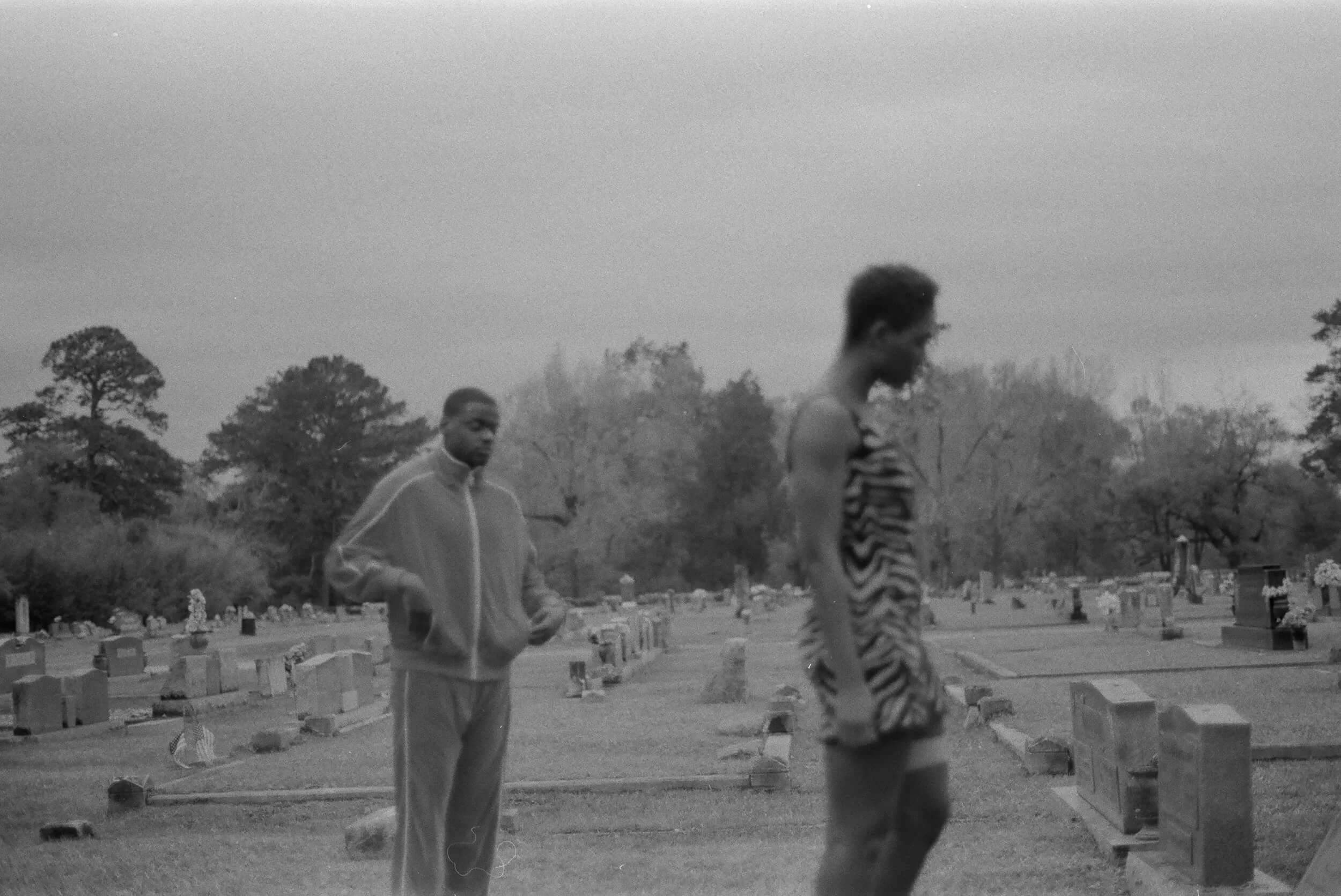
Addy, 26 from London, largely operates in the fashion space, bringing his exacting eye to editorials and portraiture that largely explore the Black body. Having met Lena briefly on a panel in Cannes and having never worked with Melina, he relished the opportunity to “explore the power dynamics within Queen and Slim’s relationship,” stating that, “I believe my images help show the power and strength their characters needed throughout their journey.” Shot in New Orleans at Queen’s Uncle Earl’s home, the images evoke the warmth and strength of Black love that blossoms throughout the film.
Ethiopian-American contemporary artist Awol Erizku’s approach was to explore the symbolism through the film. “I just love his still life and I wanted somebody who could interpret Queen and Slim through the use of props and significant items in the script and put those together so you understand what our story is in one frame,” he says.
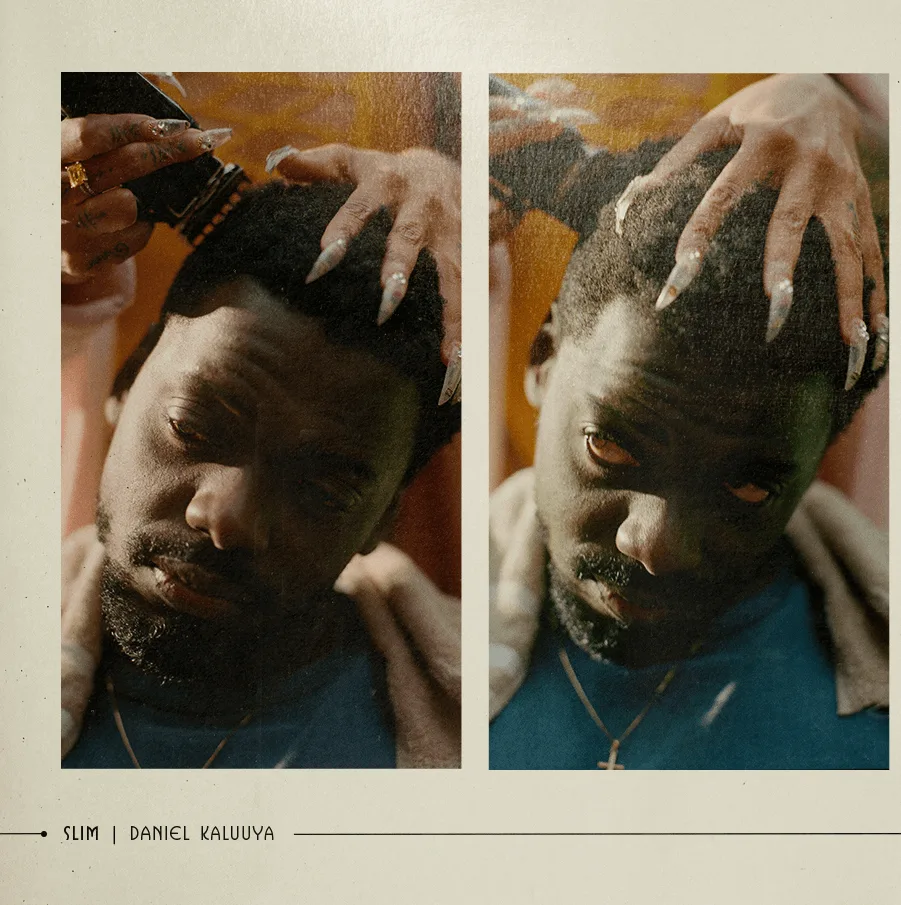

Photographer Lelanie Foster is Melina’s cousin but as the 32-year-old grew as a photographer she recalls how “Melina became a great source of inspiration, especially as a Black woman in a white male-dominated industry where I often found myself one of one on set.”
“I remember an instance in college when the chair of the photography department told me I didn’t “look like a photographer.” As creatives of color, we are always seeking out the chance to make our artistic voices heard and this film provided just the platform and opportunity so how couldn’t I say yes to the moment that was being given to me,” she explains. The result is a collection of images that magnify small, fleeting details into beautiful testaments of time.
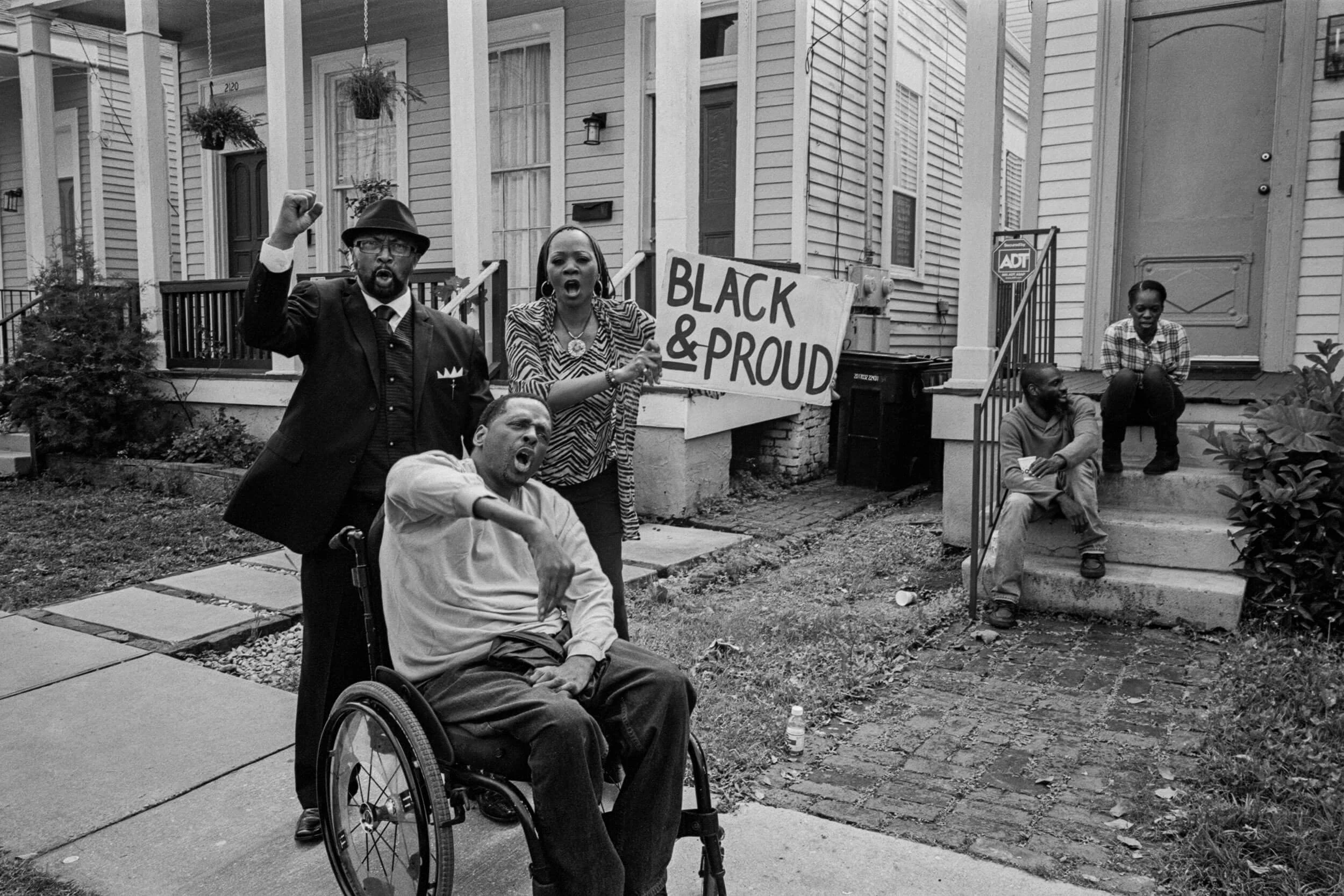
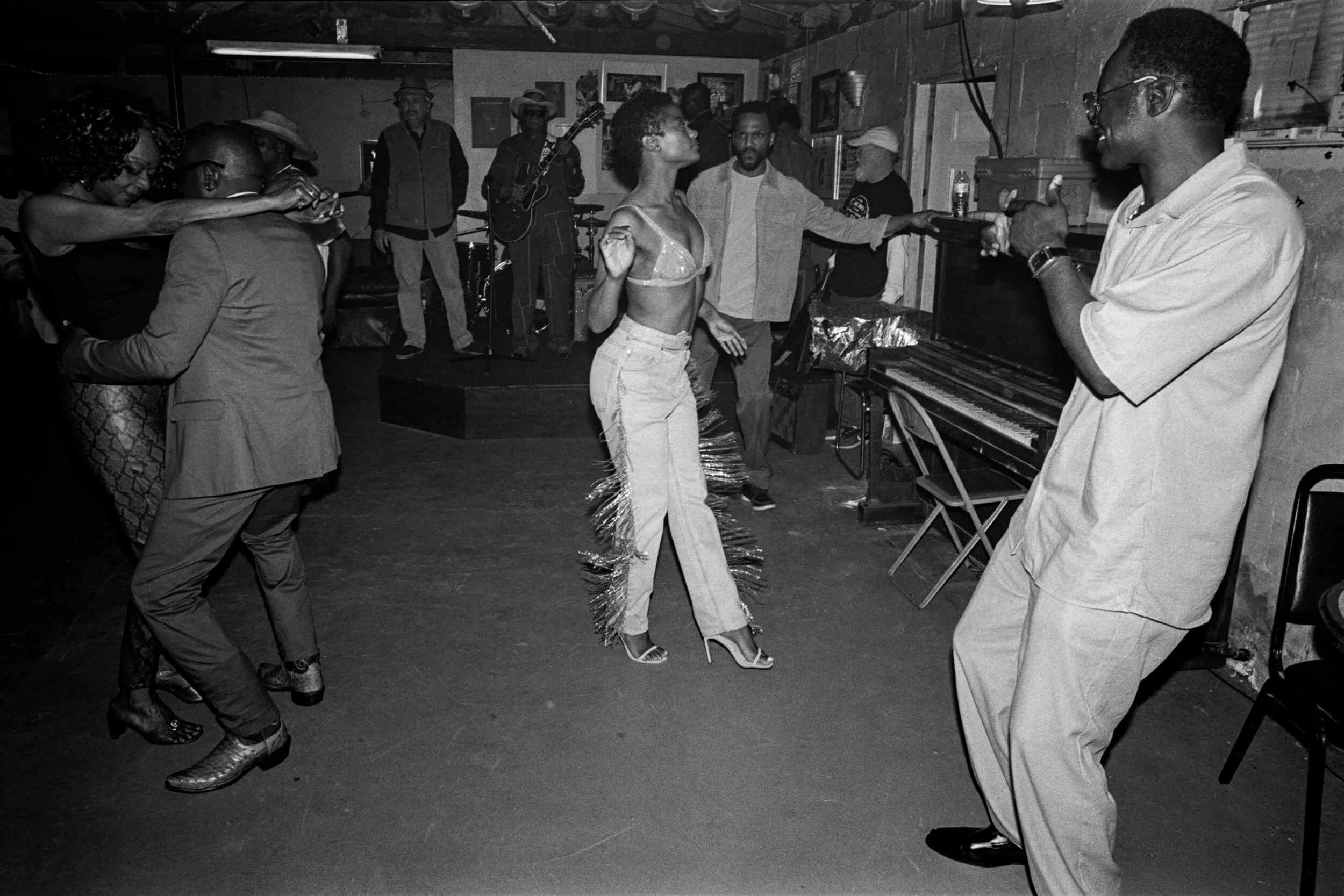
I think this film’s legacy will be based on how it makes people feel.
Documentary photographer, Andre D. Wagner’s contribution actually started from the script, a scene where Queen and Slim’s photograph is taken atop of the car by a young boy which would inadvertently turn into one of the lasting legacies of the characters. “I started looking into Black photographers who had a more documentary style, and I came upon Andre Wagner's work,” Melina explains. Wagner, 33, whose work naturally nestles alongside Roy DeCarava and Gordon Parks-style images of everyday Black life, had never previously worked on a film set but on his three days on set photographed some of the film’s more intimate moments, including the riot scene and a portrait of Queen and Slim that became the poster image. “I’m a Black man, and when I saw Slim, I saw me,” he says. “I remember growing up in Omaha and going to college in Iowa and always getting pulled over by the cops, never knowing what would happen. Sometimes you got tossed to the ground, sometimes you didn’t. I think this film’s legacy will be based on how it makes people feel.”
“They are a selection of such powerful images,” comments Armina Mussa, the film’s art director. “I think they exemplify the movie perfectly.” Armina, who also practices as a sculptor, worked closely with Melina on all elements of the film, from poster design to social content, utilizing her eye for design on the graphic and still imagery across the film collateral as well as the movie’s soundtrack, scored by musician Dev Hynes.
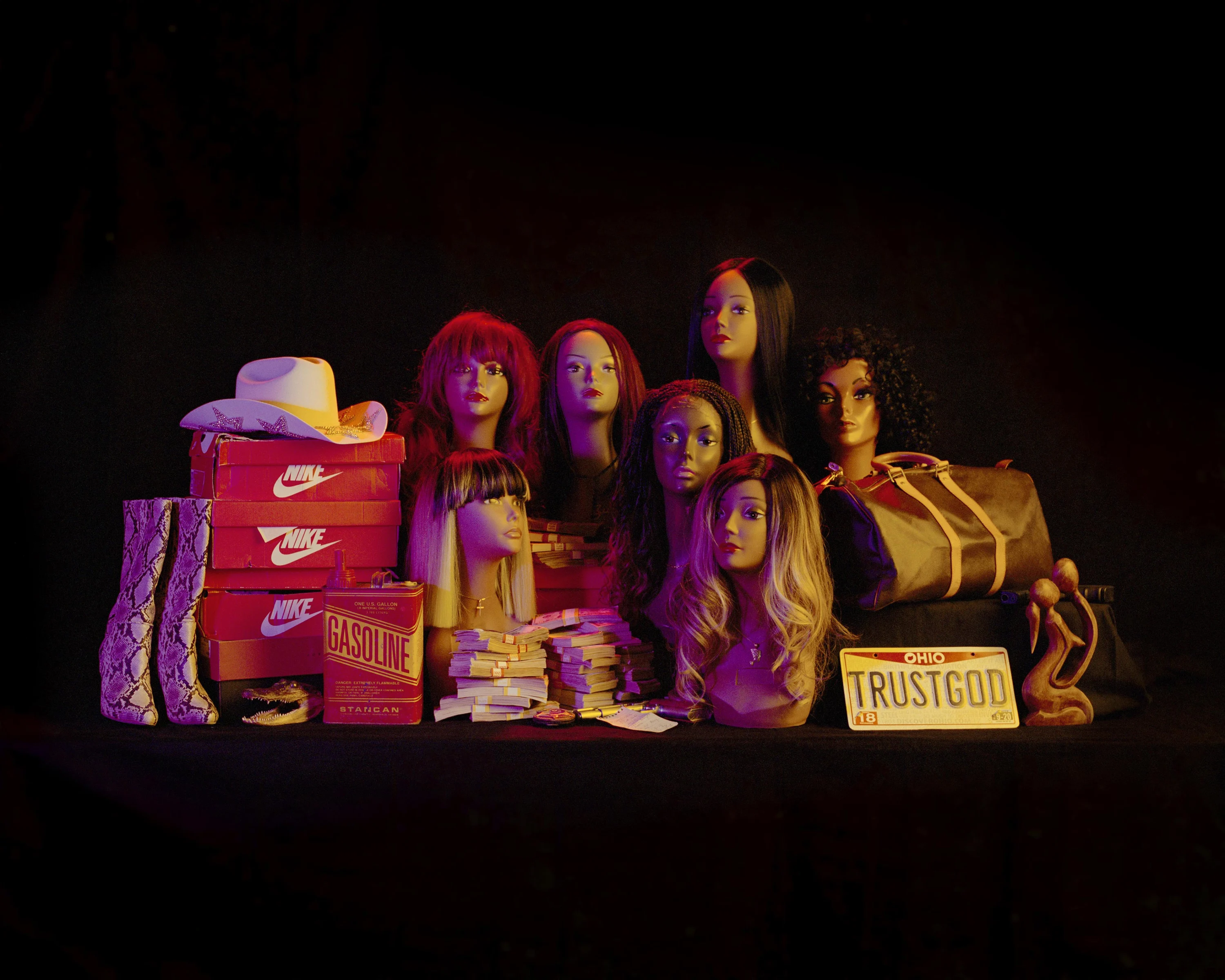
Now, as the film is released into the world, Melina’s wish for the photographs is that they can become physical, by way of a book or an exhibition, letting the story of Queen & Slim live longer than the film’s two hour run-time. “There is a burden that we all bear as Black artists, right? We have our community on our shoulders and we can't afford the opportunity to fail and we live with that every day that we're creating,” she says. “It's an intense and immense and unfair weight to carry. I felt that the whole way through making this film, knowing that I had to overcome all of it and I love that these photographs are free of that. This film ends in tragedy but there is a joy for me in these photos and through all of these amazing artists that I've been able to collaborate with. And that's what filmmaking is. It’s building and telling the story of our community. We can empower each other, we can support each other. When we get a win, we can all win, you know?”

